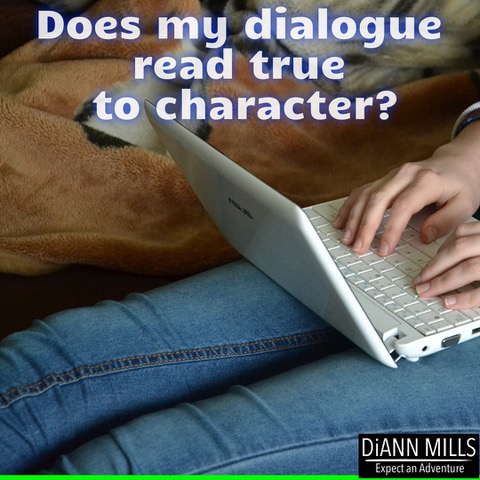
Guidelines help us choose the right words at the right time for the right character.
Many variables play into dialogue: personality, culture, education, genre, and all the other aspects of a specific story in an extraordinary story world. Guidelines help us choose the right words at the right time for the right character. More stress for the writer but help is on the way!
When should a writer weave action and dialogue? The key word is pacing. If we need to speed up the scene, eliminate the gestures and action and let the verbal communication fly. Weigh the character’s goal for the scene and write an unpredictable line of dialogue. Your readers will appreciate your diligence to craft. All they will remember is your dialogue hit the amazing mark.

Clichés
Avoid clichés. Instead of a character relying on an overused phrase, look to the character’s personality, genre, and life experiences to fashion an original metaphor or simile. A phrase unique to your character stays in the reader’s memory long after the last sentence.
Dialect
Foreign languages tend to confuse readers. The best solution is to write only a word or short phrase in the non-English passage and organically show the meaning. Italicize the foreign spelling once. After the first instance, use the font that matches the rest of the text. Do this sparingly.
If writing a foreign language is necessary, the following example shows how to incorporate the dialogue in a way the reader understands.
“Buenos dias.” The woman smiled.
“Good morning to you, too,” I said. “Let me see if I can say this correctly. Buenos dias.”
“Perfect. Your Spanish is improving.”
Be mindful of tossing a reader out of a story to show the writer is fluent in another language. Consider stating the characters spoke in non-English and writing the dialogue in English.
English idioms that don’t translate to English are another problem in using dialect. A foreign speaking character may not have the understanding or words to adequately translate an English expression.
Italics
Avoid the overuse of italics. My belief, as with the use of dialect, is that the slanted font tosses the reader out of the adventure. With the popularity of e-readers, italics are often hard to read. Why would a writer deliberately frustrate a reader?
Note for a first-person point of view, internal thoughts are already assumed. For third-person point of view, use italics sparingly to pack a punch or reword the passage.
When in doubt about how to write italics, consult The Chicago Manual of Style. Also refer to your publisher’s style guide for further clarification.
Less Is Always More
Condense dialogue with the concept less is always more. Add muscle and punch through powerful nouns and verbs that paint a vivid picture. If writers composed dialogue like we speak, readers would soon be bored. Imitate real speech with the knowledge we don’t speak in complete sentences. Sentence fragments and one word dialogue relay what is meant without sounding stifled and formal. Don’t be afraid to cut and revise.
Never use a ten-dollar word when a two-dollar word fits. I’ve heard writers say they want to educate the reader and sending them to the dictionary is a good thing. Dear writer, with rare exception, the practice isn’t wise when the technique diverts from the story and at times insults the reader.
Author intrusion occurs whenever the writer has a personal agenda and breaks up the dialogue with nonessential trivia or information such as the following:
* Look at how much I know.
* Research made this dynamic story possible.
* Personal beliefs and opinions are my bandwagon.
* I’m educating you with this information dump that is unrealistic between characters.
Parentheses
Avoid parentheses. People don’t talk or think in parentheses, so create your character’s dialogue without them.

Profanity
Choose how to handle profanity in dialogue.
* Yes. Cursing is needed in my story to show a real character.
* No. My personal beliefs eliminate profanity.
If you prefer not to include profanity, show how a character swears with creative word choices or state he/she cursed. For example:
* I hadn’t heard that kind of language since my Navy days.
* She swore like a sewer rat.
* “You no-good—” He swore.
* She cursed but I ignored her. “Is there anything else I can do for you?”
* “My mama would wash your mouth out with soap.”
Research
Research where your character lives and the era in which your story is set. Colloquial phrases and word choices differ from area to area, state to state, region to region. Visit the area and talk to those living there. Libraries, chambers of commerce, national and state parks, and visitor centers will have information not always available online.
Silence
Silence in dialogue needs a warning light. While the technique is an accepted part of communication and proven effective, be careful not to overdo it. In power-driven situations, a character may use silence to see how long before the other character responds.
Positive Silence
* The silent character can show a person of intelligence, a person who analyzes what others say and processes the information for good.
* Silence is effective in preventing verbal abuse from continuing.
Negative Silence
* The silent character can take advantage of their listening skills for negative reasons.
* Negative silence breaks down dialogue when problem solving is essential.
* Silence in discussions that are relationship-oriented inhibits valuable communication.
Trigger Phrases
Avoid trigger phrases that are one-liners to encourage the original speaker to continue. For example:
* “Really?”
* “Tell me more.”
* “What?” “
* “Why?”
* “I don’t understand.”
If a break is needed for the speaker, consider an action or gesture.
Violence
Violence can explode on the page through vivid dialogue and is often necessary to the storyline. In writing violence, stay in character and be true to genre.
When everything around the POV character fades into oblivion, the only thing that’s important is what’s being said. The words, gestures, body language, and purpose keep the reader rooted in the story.
DiAnn Mills is a bestselling author who believes her readers should expect an adventure. She is a storyteller and creates action-packed, suspense-filled novels to thrill readers. Her titles have appeared on the CBA and ECPA bestseller lists; won two Christy Awards; and been finalists for the RITA, Daphne Du Maurier, Inspirational Readers’ Choice, and Carol award contests. DiAnn is a founding board member of the American Christian Fiction Writers, a member of Advanced Writers and Speakers Association, Mystery Writers of America, and International Thriller Writers. DiAnn continues her passion for helping other writers be successful. She speaks to various groups and teaches writing workshops around the country. Connect with DiAnn on her various social media platforms here: www.diannmills.com
